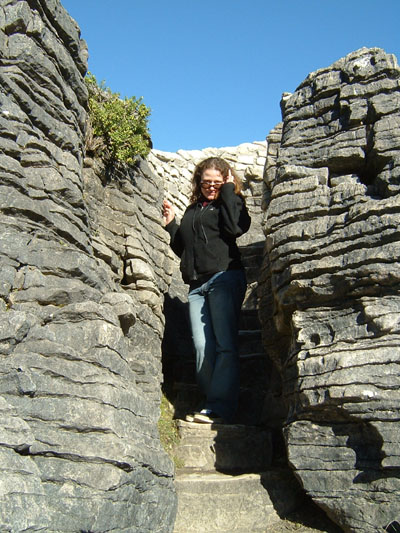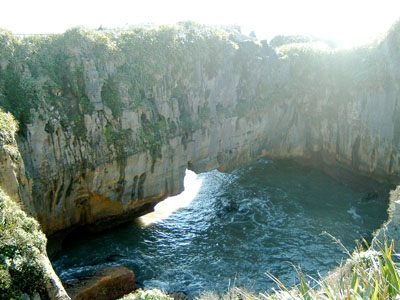
Paparoa National Park
The Coast Road, as the name indicates, follows the west coast, and the sea is within sight nearly the entire way. The park is a fairly small one, by New Zealand standards, about 30,000 ha. It protects the unique landscape, particularly the coastline, that is the result of the predominant lime stone rock foundations of this part of the South Island. Caves, dramatic overhangs and huge, spectacular bluffs abound here, as do lovely beaches, such as this one.In the background, you can see the Southern Alps peeping over the horizon.






